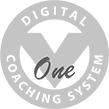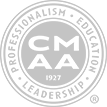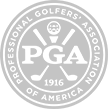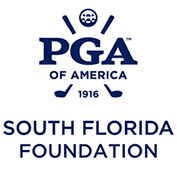Pros and Cons of Golf Teaching Aids

by Dr. T.J. Tomasi A Legacy Post by Keiser University College of Golf Senior Faculty and Director of Research (1940-2023)
Choosing a Golf Teaching Aid
Choosing the right golf teaching aid depends on your skill level, training goals, and areas you want to improve. Consider teaching aids for specific skills, such as swing trainers for mechanics, putting aids for accuracy, or grip trainers for consistency. Make sure the aid you choose is easy to use and aligns with your learning style. Budget is another important factor; balance the cost with the expected benefits and product quality. Additionally, consult reviews or seek advice from golf professionals to ensure the aid suits your needs and complements your practice routine.
Cost
When selecting a golf teaching aid, consider its cost and whether it fits within your budget while offering the desired benefits. Look for an aid that balances affordability with quality and effectiveness, ensuring it adds real value to your practice without overspending.
Portability
Teaching aid portability is crucial for golfers who practice in various locations, such as at home, the driving range, or on the course. Compact and lightweight aids are ideal, as they can be easily carried and set up, making training more flexible and convenient.
Ease of Use
Choose a teaching aid that is straightforward and easy to use, allowing you to focus on improving rather than struggling with setup or operation. Simpler designs often enhance practice efficiency, especially for beginners or those with limited time.
Other Factors to Consider for Golf Teaching Aids
The best teaching aids are those that allow you to actually hit balls while using them. In addition to the big three considerations — cost, portability, and ease of use — here are a few other things to remember when choosing and using a teaching aid:
- Be prepared for some uncomfortable feelings, and don’t confuse comfort with correctness. If it feels like nothing new is happening with the teaching aid on, that’s what it’s worth — nothing. Ignore ball flight. If the aid is any good, it will give you the feedback in feel, but not necessarily in flight.
- Choose your aids carefully with the help of your pro. They must fit your body type (flexibility, strength, etc.) and your circumstance. The teaching aid must deal with the cause of the problem; otherwise, no matter how fancy it is, it won’t work.
- Hit balls until the feel of the move is yours. Once you can identify the feel, take the aid off and alternate swings with it off, then on. After that, the minute you lose the feel, put the aid back on. This is why “ease of use” is so important.
- Some teaching aids should be used on a weekly basis as a prophylactic — ask your pro.
- Some aids deal with the overall swing, but most teach you a key position or cure a specific error. Just make sure you identify the problem before you apply the solution.
- Don’t leave the aid on too long. When you hit 50 balls with a teaching aid on, all you learn is how to hit 50 balls with a teaching aid on.
Pros of Golf Teaching Aids
Golf teaching aids are a game-changer for golfers aiming to improve their skills. Whether you’re a casual golfer or chasing a lower handicap, teaching aids can boost your confidence and elevate your game. Here are some benefits of golf teaching aids:
- Improving Swing Technique: Teaching aids can help golfers work on their swing mechanics by providing feedback on body positioning, tempo, backswing rhythm, and swing extension.
- Increasing Accuracy: By targeting specific elements of the swing such as feet placement, clubface alignment or ball impact, teaching aids can improve accuracy of shots.
- Improving Distance Control: Teaching aids help golfers develop better control over shot distances, increasing their clubhead speed and offering better striking.
- Enhancing Short Game: Teaching aids tailored for chipping and putting help golfers improve critical areas of their short game, such as aim, pace, and stroke consistency.
- Building Muscle Memory: Repeated use of certain aids reinforces proper form and habits, allowing golfers to develop and retain effective muscle memory for improved performance.
- Providing Instant Feedback: Many aids give real-time feedback, enabling golfers to identify and correct mistakes during practice sessions.
- Customizable for All Skill Levels: Golf teaching aids are available for players of all abilities, making them accessible for beginners and professionals alike.
Cons of Golf Teaching Aids
I have found that as helpful as these devices can be, they also have their problems:
- Ease of Use: They are often used incorrectly.
- Effectiveness: Most don’t work; their claims far exceed their performance.
- Consistency: Students don’t stick with them long enough, so even if they do work, their effectiveness is neutralized.
- Cost/Expenses: The more expensive they are, the less effective they are.
- Other Options: In most cases, you can invent your own teaching aid once you know what the problem is.
- Storage Challenges: Golf teaching aids can take up space, and some tools are bulky, making them difficult to store or transport.
- Durability Issues: Many teaching aids are not built to withstand regular use over time.
- Impact on Pace of Play: Using teaching aids during practice rounds or on the course can slow down the pace of play.
Example of a Golf Training Aid
In the picture below, a golfer is shown wearing an elbow brace training aid. The brace keeps your elbow in the right position, cutting down unnecessary movements that affect the shot. By practicing with this brace, you train your muscles to remember the correct alignment, making your swing more consistent when it really counts on the course.
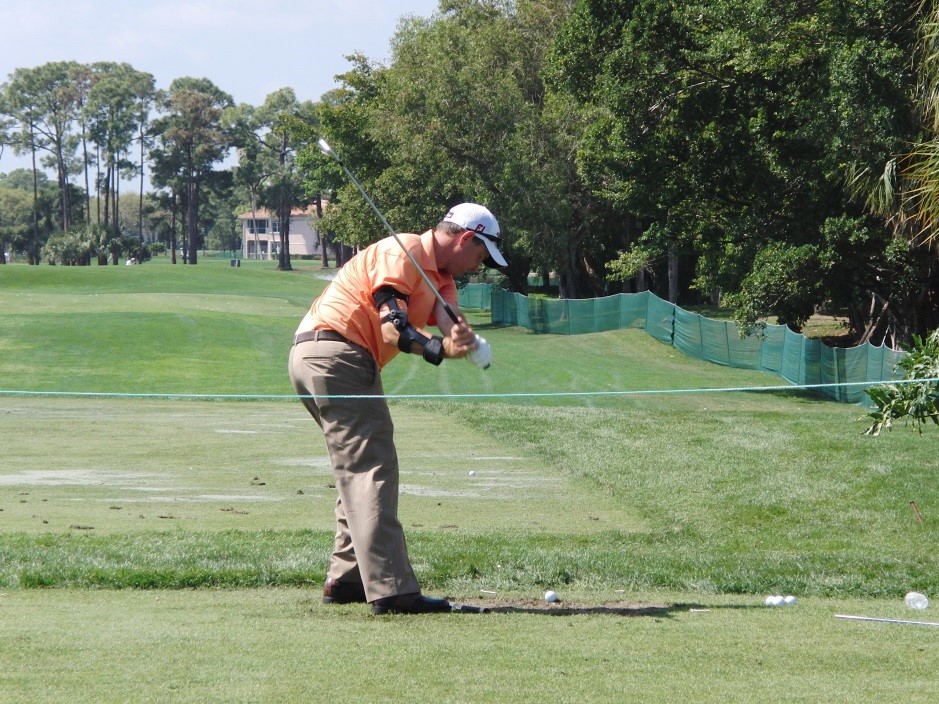
This tour player is practicing with a teaching aid that helps him control his elbow motion.
Learn more!
Want more tips? If you want to take your game to the next level, contact our team at Keiser University’s College of Golf & Sport Management today. With our dedication and experience, we can elevate your game to new heights together. Give us a call today at 888-355-4465.






